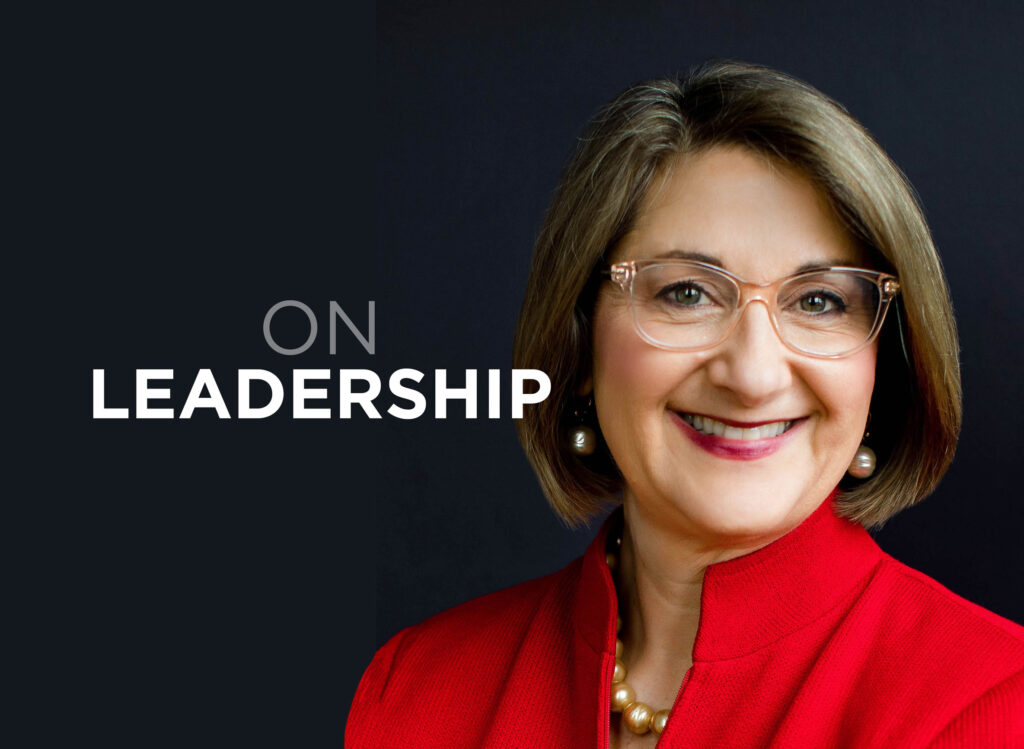On Leadership: The pandemic emergency is over, but the way we work and lead will never be the same

I was leaving a board meeting in Chicago and headed to O’Hare on the afternoon of May 5 when I got a Reuters text alert on my phone: The World Health Organization was announcing that the COVID-19 pandemic emergency was over, expiring on May 11.
I clicked on the link and quickly scanned the article. I was overcome with a wave of emotion. I turned to the board colleagues with whom I was traveling and read them the news. “I feel like this official end should have been announced with some greater fanfare — accompanied by trumpets or something,” I said. They agreed: How could an experience that so profoundly affected our lives and work just be over, expired and announced via a text alert?
On the plane ride home, I reflected on how much the pandemic has transformed us, especially in business and the workplace. Responding to the crisis required a different type of leadership from many of us that continues today; we must be faster, more flexible and more tuned in to our team members’ feelings than before.
When I flash back to March of 2020, it seems like a lifetime ago, yet still so palpable: the looming fear and uncertainty of the health implications of COVID-19; business and school shutdowns; going remote; scrambling to get new technology in place; rushing to create virtual events and processes. We were all trying to figure out how to communicate and support each other as we worked from home, watching colleagues’ pets and babies and spouses enter our Zoom screens – all while dealing with loved ones’ and colleagues’ illnesses and even deaths. As the crisis unfolded, leaders were forced to make decisions quickly with imperfect information and to draw more human-centered skills.
Now, according to CDC data, more than 96% of Americans have either had the coronavirus, been vaccinated or both. The World Health Organization said that while the pandemic will continue to be with us, the state of emergency has ended, and that “countries should now manage the virus that killed more than 6.9 million people along with other infectious diseases.”
Going forward, we’ll not only be managing the virus but continuing to navigate the changes that have resulted from that intense time of upheaval in 2020 and the ensuing period of work redefinition. While many leaders talked throughout the pandemic about getting back to normal, we are now living the new normal.
As we have evolved during the pandemic emergency, what have we truly learned about leadership? Here are some compelling lessons:
We must be faster. While change has always been a part of leadership, the pace and type of change has accelerated. A recent McKinsey & Co. report says, “The pandemic propelled faster adoption of digital technologies, including automation and AI.” We are now accustomed to using new tools that foster productivity but also speed up the rate at which things move. The leader of the future will need to embrace rapid decision-making and agile leadership and increase “talent velocity,” hiring and “upskilling” quickly, which McKinsey & Co. describes as a hallmark of agile models.
We must be more flexible. A recent Gartner trend report indicates that hybrid flexibility has stretched across all ranks of workers — from executive and white-collar to front-line and blue-collar — stating that employees increasingly value control over their work schedule, paid leave, what they work on and the amount they work. Many companies have settled into flexible or hybrid work arrangements, and policies have shifted to meet new worker preferences and demands. A colleague working from a warmer climate in winter for an extended period is no longer unusual, nor is a once totally local enterprise having a workforce dialing in from other cities. And dogs barking in a Zoom background are no big deal.
We must be more feeling. Eighty-two percent of the employees surveyed in the Gartner trends report say it is important that their companies “see them as a whole person.” That means talking about and providing support for mental and physical health, addressing disparities and equity issues and acknowledging how work fits into our larger personal lives. A recent Forbes article says that creating psychological wellness is a major trend and asserts that “it is imperative in today’s job market that business leaders commit to the mental and physical well-being of employees.” To authentically care for our team members means that we as leaders must acknowledge our own feelings and allow ourselves to be “whole people,” too.
It is up to us as leaders to learn from the lessons of the pandemic and use that knowledge to create faster, more flexible and more human-centered and compassionate workplaces in the future.
Let’s use these takeaways to be better leaders. I will never forget where I was when I learned that schools and businesses in Iowa would be shut down in 2020: at home, making dinner, realizing that our world was about to change completely. I was ready to meet the challenges but had no idea what would come. Similarly, the ride to O’Hare will remain in my memory – a moment when I understood we have been indelibly altered and must continue to push forward. It is up to us as leaders to learn from the lessons of the pandemic and use that knowledge to create faster, more flexible and more human-centered and compassionate workplaces in the future.

Suzanna de Baca
Suzanna de Baca is a columnist for Business Record, CEO of Story Board Advisors and former CEO of BPC. Story Board Advisors provides strategic guidance and coaching for CEOs, boards of directors and family businesses. You can reach Suzanna at sdebaca@storyboardadvisors.com.






